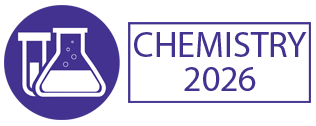Gravimetric Analysis
Gravimetric analysis is a quantitative analytical technique used to determine the concentration of an analyte in a sample based on its mass. This method relies on the principle that the mass of a pure compound can be determined accurately, allowing for the calculation of the mass of the analyte present. Gravimetric analysis involves several steps, including sample preparation, precipitation or formation of a pure compound containing the analyte, filtration, washing, drying, and weighing. The mass of the pure compound formed is then used to calculate the amount of analyte present in the original sample. Gravimetric analysis is widely used in chemistry for the determination of metal ions, non-metal ions, and organic compounds. It offers high precision and accuracy, particularly for substances that can be isolated in pure form with minimal contamination. Gravimetric methods are commonly employed in quality control, environmental analysis, and research laboratories. Specialized techniques such as volatilization gravimetry and combustion gravimetry are utilized for specific types of analyses. Gravimetric analysis requires careful attention to detail and strict adherence to procedural protocols to minimize errors and ensure reliable results. Continuous advancements in instrumentation, automation, and data analysis software enhance the efficiency and accuracy of gravimetric techniques in modern analytical laboratories.

Hossam A Gabbar
Ontario Tech University, Canada
Victor John Law
University College Dublin, Ireland
Alexander Bagaturyants
National Research Nuclear University MEPhI, Russian Federation
Sergey Suchkov
N.D. Zelinskii Institute for Organic Chemistry of the Russian Academy of Sciences, Russian Federation
Shree Niwas Chaturvedi
Centre for Aptitude Analysis and Talent Search, India
Pieter Samyn
SIRRIS, Belgium




Title : Advances in plasma-based radioactive waste treatment
Hossam A Gabbar, Ontario Tech University, Canada
Title : Unraveling the ultrastructure and functions of the neuronal membrane skeleton using super-resolution fluorescence microscopy
Zhou Ruobo, Djillali Liabes University of Sidi Bel Abbes, Algeria
Title : Solar box cooker dehydration, and relative humidity endpoint detection, of lamiaceae culinary leaves on the island of Crete
Victor John Law, University College Dublin, Ireland
Title : Nutrient and heavy metal loads from the Ribeiras to Coastal zones: A land-ocean continuum perspective in Madeira Island
Aracelis Del Carmen Narayan Rajnauth, University of Porto, Portugal
Title : Prospective polyoxometalate-based covalent organic framework heterogeneous catalysts
Arash Ebrahimi, Comenius University Bratislava, Slovenia
Title : Eliminating implant failure in humans with nano chemistry: 30,000 cases and counting
Thomas J Webster, Brown University, United States